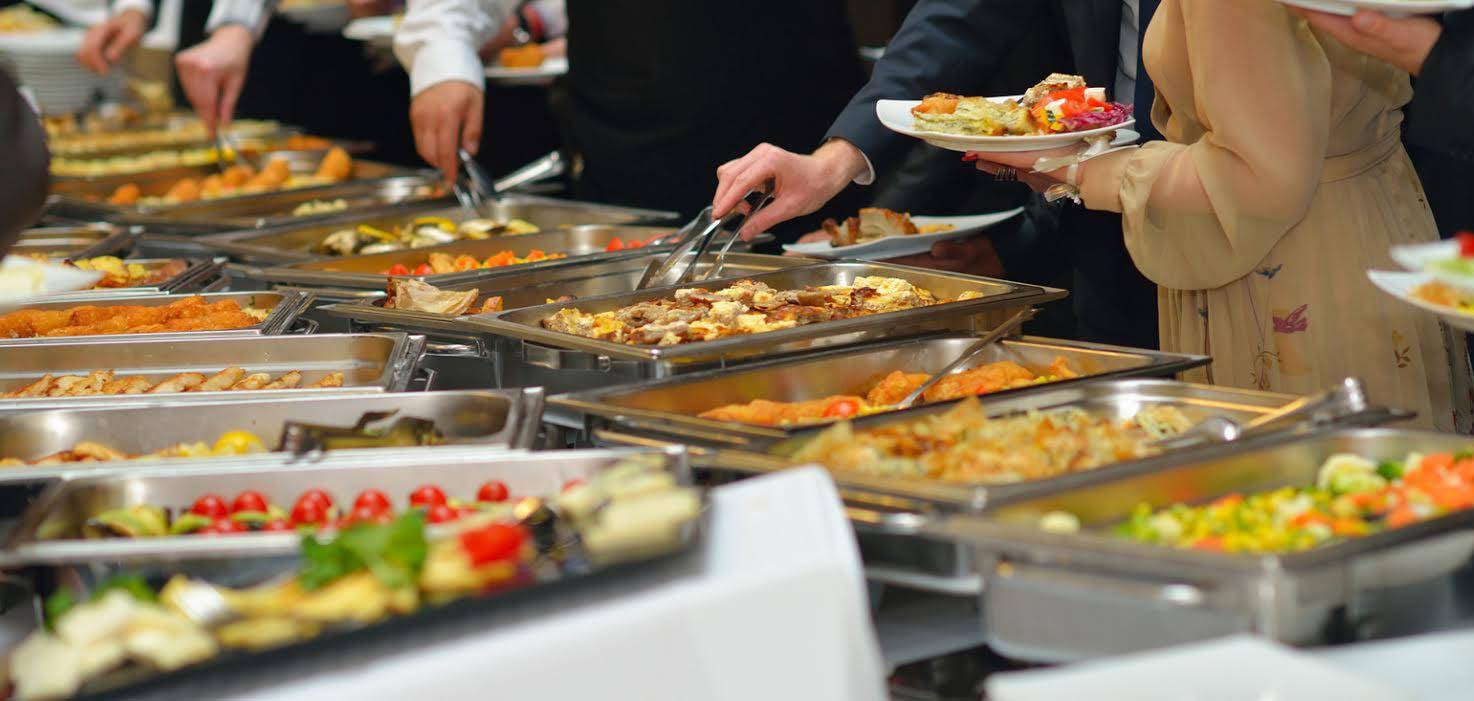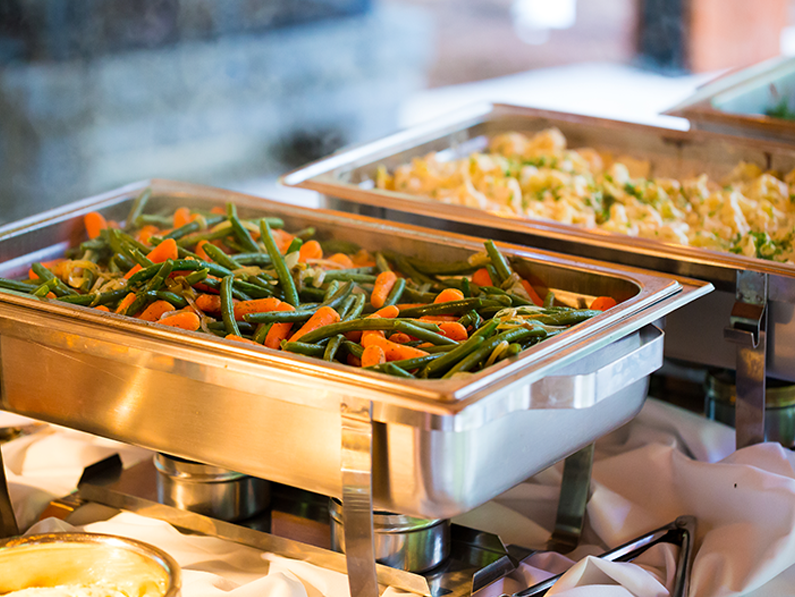03 May, 2019
Buffet Restaurant Business Tips
The appeal of the buffet is pretty obvious. They provide guests an opportunity to sample new and innovative items and to choose those which tempt their palate; most guests enjoy the adventure of discovering new delicacies without having to pay for a whole portion.
Buffets add excitement by offering creative salads and appetizers, hot and cold dishes prepared at interactive stations and succulent desserts.
For the operator, buffets are just as appealing. Generally, the labor cost is much lower since all dishes are prepared ahead of time in bulk. The actual service period can be managed with fewer employees than an a la carte or plated banquet scenario. In addition, more guests can be catered in a given time period, enabling the operator to turn tables more frequently.
On the other hand, a buffet is only profitable if it sells well; ample leftovers can diminish the profit.
Pricing and portion control
Determining the food cost is one of the challenges of a buffet. It is very difficult to predict how much each guest will consume. In permanent buffets it is sometimes difficult to forecast the amount of guests for a meal period.
To calculate the price for a buffet, the cost of each item on the menu should be verified, especially new dishes. Established items that have proved to be cost effective should be reviewed periodically. The total cost for the buffet is added up after all the items have been considered. This is the estimated pre-cost of the buffet. This amount, however, assumes that every guest will have only one portion of each item. Reality oftentimes looks different; not every guest takes one portion of each item. Therefore, the total pre-cost figure is only a guideline helping to determine the price. It still needs to be verified at the end of the buffet.
The portion sizes on buffets should be less than half the size of a la carte portions. Large portions increase waste, and high-cost entrees are consumed in greater amounts. Giving guests the opportunity to taste small portions of each item will encourage them to try the less costly dishes.
A subtle food-cost control measure is to pre-plate more expensive items. Not only does it help to reduce waste and over production; it also provides a touch of elegance. On the other hand, pre-plating can drastically increase the labor cost; to ensure quality, well-qualified staff is required to arrange nice looking plates. An oftentimes overlooked aspect of portion control on a buffet is the size of serving utensils. Time and again, large kitchen spoons and ladles find their way to the buffet line, leading to significant waste. Designated serving utensils contribute to the proper portion control.
Food served on smaller trays and platters may have to be replaced more frequently, but it does convey the message that there is not an endless supply and will guide the guest to take only one or two selections rather than over-fill their plates. Serving food in smaller serving vessels also provides the opportunity for more variety.
Controlling costs
Controlling buffet costs isn’t easy. Implementation and follow through of strict rules is critical. This way, costing becomes easier to overview and less intimidating, allowing the operator to establish a good profit margin.
Holding a higher-ranking employee accountable for each step of the production and service will help keep costs in line. Clear and simple directions to the employees, written rather than verbal, are essential to avoiding miscommunication, which can result in over- or underproduction. Maintaining accurate and up-to-date logs of the day-to-day operation helps in making decisions whether to retain or reject a certain dish based on its profitability. Food cost is not the only factor; labor costs for preparation as well as for service, showmanship and equipment costs play an important role in the pricing of a buffet as well.
The equipment
Equipment must be capable of keeping food safe and at the correct temperature. Equipment also serves to highlight the food. Real marble is an ideal display base for cold foods, helping to maintain a cold temperature while being appealing to the eye. Oftentimes unconventional serving vessels are used to present food. Sushi can be presented on oversized bamboo mats. Southeast Asian stews and curries add a tropical feel to the buffet when they are presented on banana leaves. The theme of the buffet often determines the equipment and serving vessels. Chinese food can be very appealing if presented in decorative woks or clay pots. Classical French food benefits from being displayed on traditional silver platters.
Where food temperature is concerned the trend is toward integrated burners and heat-plates to hold food in attractive dishes. For simple catering situations, however, chafing dishes still come in handy. To hold cold food, integrated refrigeration is the ideal solution; if not available, insulated crocks, bowls and hotel pans work, some featuring double walls with a refrigerant gel. Frozen overnight, they hold a temperature of less than 40°F for up to eight hours.
The beauty of a buffet is quickly damaged once the guests start assembling their plate. To counter this, consider using smaller trays, perhaps with separators. Change trays frequently so they look fresh and attractive. To break the monotony, use trays and plates in a variety of shapes, sizes and colors. Decorative risers and colorful table clothes reflecting the theme, the occasion or the event add a third dimension to the buffet. Attractive enhancements such as sculptures made from ice, butter or chocolate beautify it.
Interactive stations, where dishes are prepared to order, require special equipment. If there are no integrated burners in the station, portable gas burners can be used. The better choice is induction cook-tops. Since there is no flame, there’s little chance of injury. They heat up fast, cool down quickly and are cost effective and energy efficient
Food safety
One of the most important aspects of any buffet is food safety, a constant challenge for the foodservice industry. It is paramount to be aware of and comply with new and changing sanitation regulations. Implementing and enforcing a rigorous cleaning and sanitation schedule verified with up-to-date logs is a good beginning. Ideally, all foodservice workers are certified in food safety to encourage personal responsibility.
The temperature danger zone, between 41°F and 141°F, is another very important factor of food safety. In this temperature range, pathogens can multiply rapidly and spoil most items high in moisture and low in acidity. Keeping the food out of this range is essential; as per food safety authorities, the upper limit of exposure time at temperatures between 41° and 141° is four hours.
Hot food for buffets is often kept hot for extended periods; the temperature should be checked and documented by a staff member on a regular basis. An infrared thermometer is a convenient tool for that, but it only measures surface temperature. To verify internal temperatures of whole roasts and the like, you need a probe thermometer.
Glass shields, installed above the food, are a good way to keep food safe, especially from accidental sneezing.
By controlling the actions of everyone involved in the buffet preparation and presentation, you can minimize risks and ensure optimum safety. The responsibility of foodservice operators is to provide the guest with a great meal and a unique experience as well as to ensure the well being of the customer.


